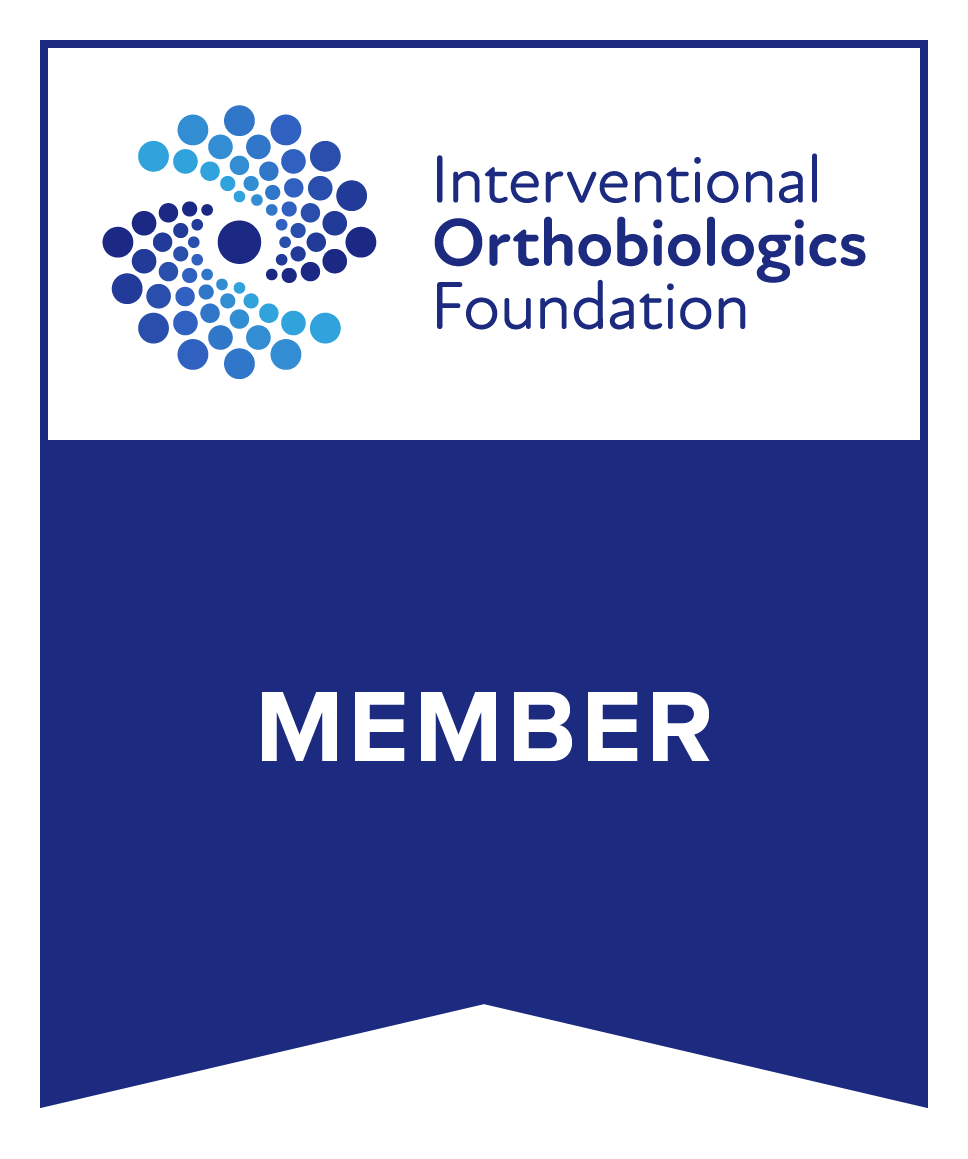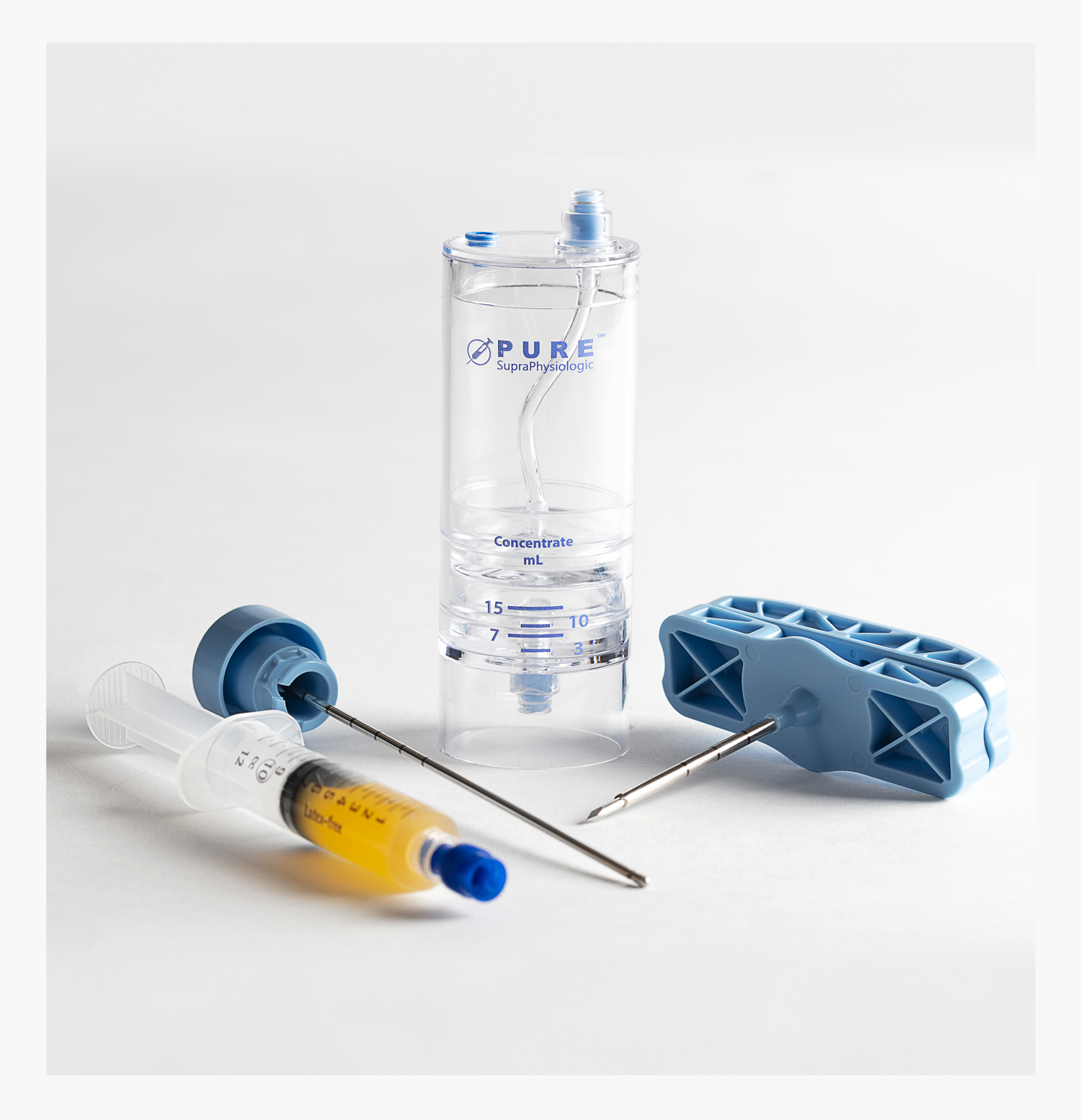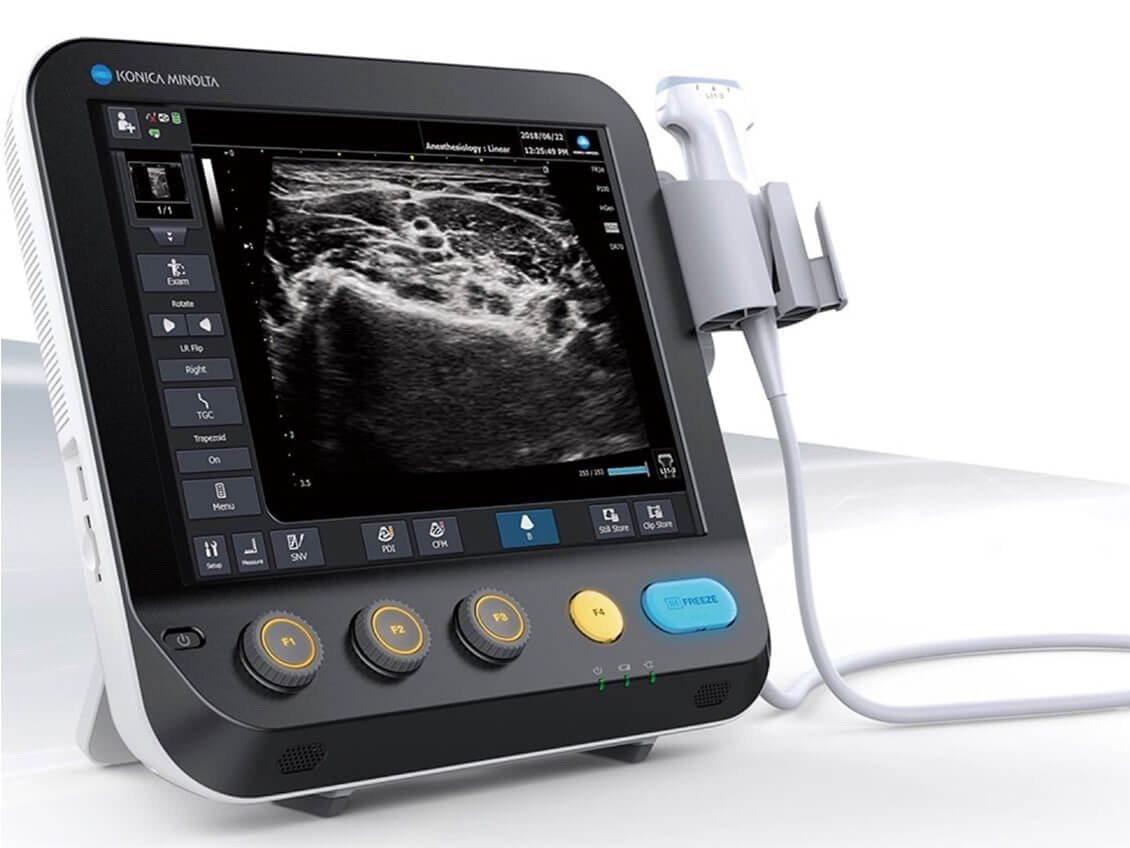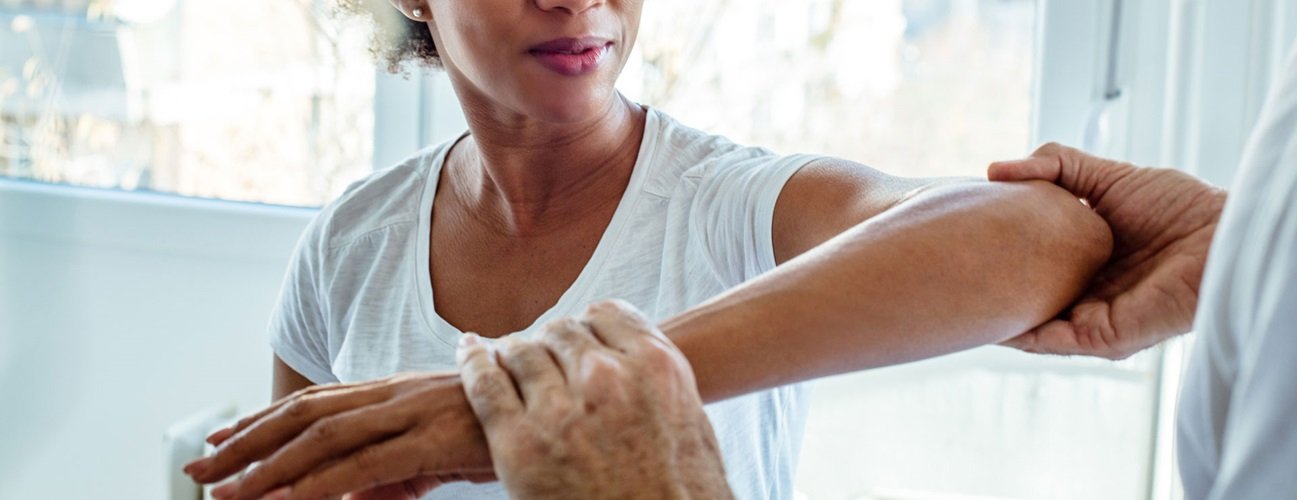Arthur J. Ting, M.D. in collaboration with JD PA Inc.
〰️
Arthur J. Ting, M.D. in collaboration with JD PA Inc. 〰️
Platelet Rich Plasma (PRP)
Platelet Rich Plasma (PRP) has emerged as a groundbreaking medical treatment, harnessing the body's own healing capabilities to promote tissue repair, reduce pain, and revitalize overall health. This cutting-edge therapy utilizes the immense healing power of platelets, the tiny but mighty components found in our blood, to stimulate regeneration and restore optimal function.
PRP works by concentrating the platelets found in a patient's own blood sample. Once extracted, this platelet-rich plasma is carefully prepared and then skillfully injected into targeted areas, such as joints, tendons, or muscles, to stimulate natural healing and rejuvenation. By delivering a potent cocktail of growth factors, proteins, and other bioactive substances directly to the site of injury or degeneration, PRP helps expedite the body's recovery process and maximizes the potential for long-lasting health benefits.
Whether you're an athlete experiencing a sports-related injury, an individual seeking relief from chronic pain, or someone simply looking to enhance their overall well-being, PRP offers a non-surgical, minimally invasive solution. Its healing properties extend far beyond conventional treatments, offering regenerative effects that can optimize recovery, improve functionality, and fast-track your return to an active and vibrant lifestyle.
Advantages of PRP include its natural sourcing from a patient's own blood, minimizing the risk of allergies or adverse reactions. Furthermore, PRP promotes personalized medicine, tailoring the treatment to meet each individual's unique needs and optimizing the healing process to achieve maximum effectiveness.
At Arthur J. Ting, M.D., we understand the transformative potential of Platelet Rich Plasma. Our team of experienced specialists is dedicated to delivering exceptional care, utilizing state-of-the-art techniques and technologies to bring you the highest standard of regenerative medicine. Discover the power of PRP and unleash your body's innate ability to heal and thrive. Contact us today to schedule a consultation and embark on your journey to renewed health and vitality.
Bone Marrow Aspirate Concentrate (BMAC)
Emcyte PureBMC
Introducing the breakthrough in regenerative medicine: Bone Marrow Aspirate Concentrate. Harnessing the remarkable healing power of the body's own cells, this cutting-edge therapy paves the way for a new era in healthcare. Derived from the patient's own bone marrow, this concentrated solution is rich in mesenchymal stem cells and growth factors, offering a multitude of transformative possibilities.
Bone Marrow Aspirate Concentrate (BMAC) has proven to be a game-changer for patients suffering from a wide range of medical conditions. From orthopedic injuries to chronic pain, BMAC stimulates tissue regeneration and accelerates healing, presenting a natural and effective alternative to traditional treatments.
This revolutionary procedure is minimally invasive and can be performed on an outpatient basis, allowing patients to experience swift recovery and minimal downtime. By utilizing the body's own regenerative potential, BMAC supports the body's natural healing mechanisms, reducing the risk of rejection or allergic reactions.
With its unmatched regenerative abilities, Bone Marrow Aspirate Concentrate offers hope to those who have exhausted traditional treatment options. Say goodbye to limitations and embrace a future where healing and restoration are within reach. Welcome to the next generation of regenerative medicine with Bone Marrow Aspirate Concentrate.
Conditions that benefit from BMAC:
Osteoarthritis
Tendon Injuries
Ligament Injuries
Stress Fractures
Rotator Cuff Tears
Cartilage Defects
Non-Union Fractures
Bursitis
Osteonecrosis
Bone Marrow Aspirate Concentrate (BMAC) has shown promise in promoting healing and tissue regeneration in a variety of orthopedic and musculoskeletal conditions. This includes osteoarthritis, which can alleviate pain and improve joint function, particularly in weight-bearing joints like the knee and hip. BMAC can also benefit individuals with tendon injuries such as tendinitis and chronic conditions like tennis elbow and Achilles tendonitis, as it aids in promoting tendon healing. Ligament injuries, like anterior cruciate ligament (ACL) tears, may heal more effectively with BMAC. Additionally, it accelerates the healing process of stress fractures, supports the recovery of non-union fractures, and aids in rotator cuff tear healing. BMAC can even encourage the growth of new cartilage in cases of articular cartilage defects, and it may have applications in spinal conditions such as degenerative disc disease and osteonecrosis. Bursitis, which involves the inflammation of fluid-filled sacs in joints, may also benefit from BMAC therapy. To determine the suitability of BMAC for a specific condition, it is essential to consult with an orthopedic specialist, as its effectiveness can vary based on individual circumstances and the nature of the injury or condition.
Post-Injection Protocol
Immediate rest: After the PRP/BMAC injection, it is vital to give the treated area adequate rest. Depending on the specific condition, patients may be advised to restrict the use of the injected joint or muscle for a certain period (2 weeks). Avoiding strenuous activities or excessive loading on the area can help prevent further damage and promote healing.
Avoid anti-inflammatory medications: It is generally recommended to avoid nonsteroidal anti-inflammatory drugs (NSAIDs) such as ibuprofen, aspirin, or naproxen for several weeks (2-6 weeks) after the PRP/BMAC injection. NSAIDs can potentially interfere with the body's natural healing process and may diminish the therapeutic effects of PRP/BMAC.
Post-injection restrictions: Depending on the treated area and the severity of the condition, specific restrictions and guidelines may be provided by Dr. Ting. Common recommendations include avoiding high-impact activities, heavy lifting, or excessive joint movements for a certain duration.
Gentle stretching and mobility exercises: As the initial recovery phase progresses, patients may be guided to initiate gentle stretching and mobility exercises. These exercises, designed to improve joint flexibility and muscle strength, should be performed as instructed by a healthcare professional to prevent overexertion and ensure proper healing.
Gradual return to activities: Following the initial recovery period, patients can gradually reintroduce activities and exercises with caution. It is essential to listen to the body and avoid pushing beyond comfort or pain limits. Progression should be gradual and in accordance with the guidance of the healthcare provider to prevent reinjury. (2-6 weeks)
Follow-up appointments: Regular follow-up appointments are crucial to assess the progress and adjust the treatment plan as needed. Dr. Ting will monitor the healing process and provide further recommendations based on individual requirements.
Remember, the post-injection protocol for PRP/BMAC can vary depending on the specific condition being treated and individual patient factors. It is always recommended to check with Dr. Ting or the office staff who can provide personalized guidance and ensure the best outcomes.
Frequently Asked Questions
-
Orthobiologics refers to the use of substances naturally found in the body to aid in the healing and regeneration of musculoskeletal tissues. Common examples include platelet-rich plasma (PRP), Bone marrow aspirate concentrate (BMAC) and growth factors.
-
Orthobiologics work by harnessing the body's natural healing mechanisms. For example, PRP contains a concentrated amount of platelets that release growth factors, stimulating tissue repair and regeneration.
-
Platelet Derived Growth Factor (PDGF), Fibroblast Growth Factor (FGF), Vascular Endothelial Growth Factor (VEGF), Interleukin 8 (IL-8), Transforming Growth Factor Beta (TGF-b), Insulin like Growth Factor 1, 2 (IGF-1,2), Epidermal Growth Factor (EGF).
-
Orthobiologics are commonly used to treat conditions such as osteoarthritis, tendon injuries, ligament injuries, and other musculoskeletal issues. The specific treatment approach depends on the patient's condition.
-
Generally, orthobiologic treatments are considered safe. Since these substances are derived from the patient's own body (autologous), the risk of allergic reactions or rejection is minimal. However, as with any medical procedure, there may be some risks, and it's important to discuss them with your healthcare provider.
-
The timeframe for results varies depending on the type of orthobiologic used and the individual patient. Some people may experience improvement shortly after treatment, while others may require more time for the healing process to take effect.
-
Orthobiologic treatments are administered through ultrasound guided injections or other targeted delivery methods. The specific approach will depend on the type of orthobiologic used and the area being treated.
-
We strive to ensure the patient is as comfortable as possible. Your provider will use local anesthetic and/or sedation to reduce any pain experienced at the time of the procedure. Tylenol is recommended for those experiencing pain post-procedure.
-
We ask all patients to discontinue NSAID medications prior to scheduling a biologic procedure as this can block the positive effects of the desired treatment.
-
We ask that you schedule a consult, this will allow you and the provider to cover education of orthobiologics and whether you are a candidate for treatment. Treatment cost varies depending on number of injections and location. Unfortunately, in the United States most insurance plans and Medicare/Medicaid do not currently cover orthobiologic therapies. Patients interested in having PRP/BMAC therapy are responsible for the full payment for the procedure.
-
If you are a candidate for PRP/BMC, the outcomes tend to be patient dependent. Considering how severe the disease process, this can help dictate outcome. As a patient, compliance and following the protocol given by your provider is very important.
External Links
Hospital for Special Surgery
Platelet-rich plasma therapy is a form of regenerative medicine that harnesses and amplifies the natural growth factors found in our blood cells to help heal ...
Johns Hopkins Medicine
PRP treatment can help support wound healing in trauma and joint injury. The technique can address male pattern baldness, stimulate the growth of hair ...
American Academy of Orthopaedic Surgeons
PRP has been used to treat professional athletes with common sports injuries like pulled hamstring muscles in the thigh and knee sprains. Surgery. More recently ...









